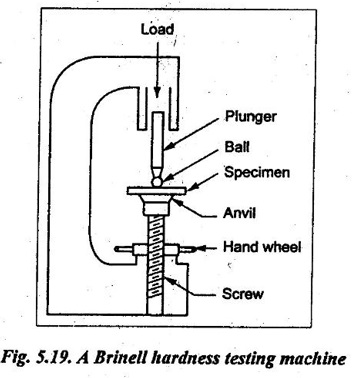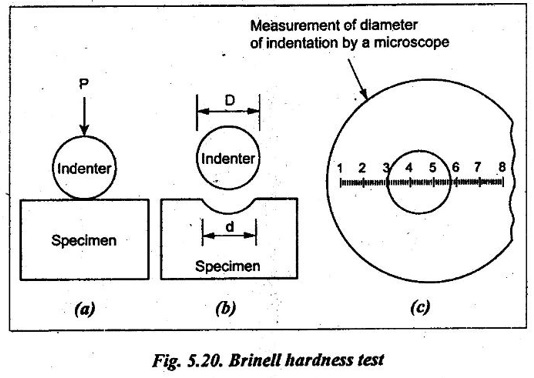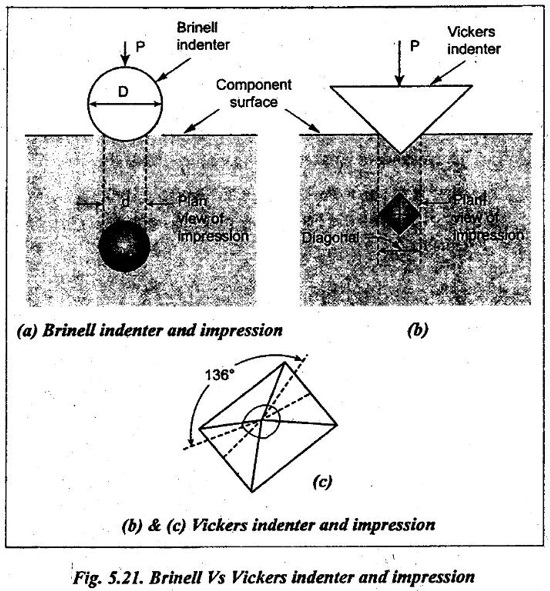One of the earlier standardised methods of measuring hardness was the Brinell test.
BRINELL HARDNESS TEST
✔ One of the earlier standardised methods of measuring hardness was the Brinell test.
✔ In the Brinell test, a hardened steel ball indenter is forced into the surface of the metal to be tested. The diameter of the hardened steel (or tungsten carbide) indenter is 10 mm. Standard loads range between 500 kg and 3000 kg in 500 kg increments. During a test, the load is maintained constant for 10 to 15 seconds.
1. Testing Arrangement and Procedure
✔ A Brinell hardness testing machine is depicted in Fig.5.19.

✔ The Brinell's hardness test is performed by pressing a steel ball, also known as indenter, into the specimen as shown in Fig.5.20.

✔ The diameter of the resulting impression is measured with the help of a calibrated microscope.
✔ Brinell hardness number (BHN): The measured diameter is converted into the equivalent Brinell hardness number using the following relation.

where
P = Load applied on indenter in kg,
D = Diameter of steel ball indenter in mm, and
d = Diameter of ball impression in mm.
✔ If the BHN value is higher, then the material is said to be harder. If BHN is less, then the metal is soft.
Missing 5.49

✔ Vickers hardness number: The diamond-pyramid hardness number (DPH) or Vickers hardness number (VHN or VPH) is defined as the applied load divided by the surface area of indentation.

where
P = Applied load in kg,
θ = Angle between the opposite faces of diamond = 136°, and
D = Mean diagonal length in mm.
1. Advantages of Vickers Hardness Test
The Vickers test has the following advantages over the Brinell test.
1. The diagonals of the square indentation can be measured more accurately than the diameters of the circles.
2. This method is suitable for hard materials as well as for soft materials.
3. The Vickers indenter is capable of giving geometrically similar impression with different loads. Thus, the hardness number is independent of the load applied.
2. Limitations of Vickers Hardness Test
The Vickers test has the following limitations.
1. The impression is very small and also it requires careful surface preparation of the specimen.
2. It takes a relatively long time to perform a Vickers hardness test.
No comments:
Post a Comment